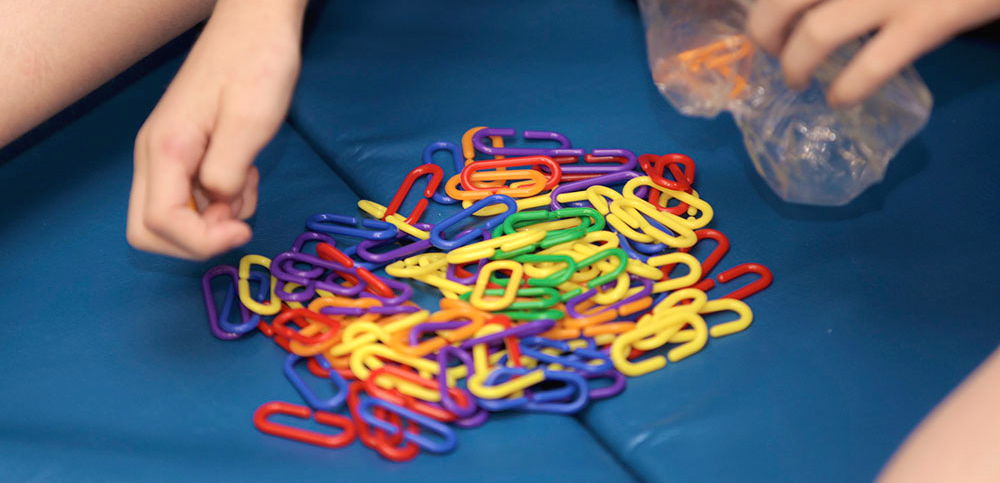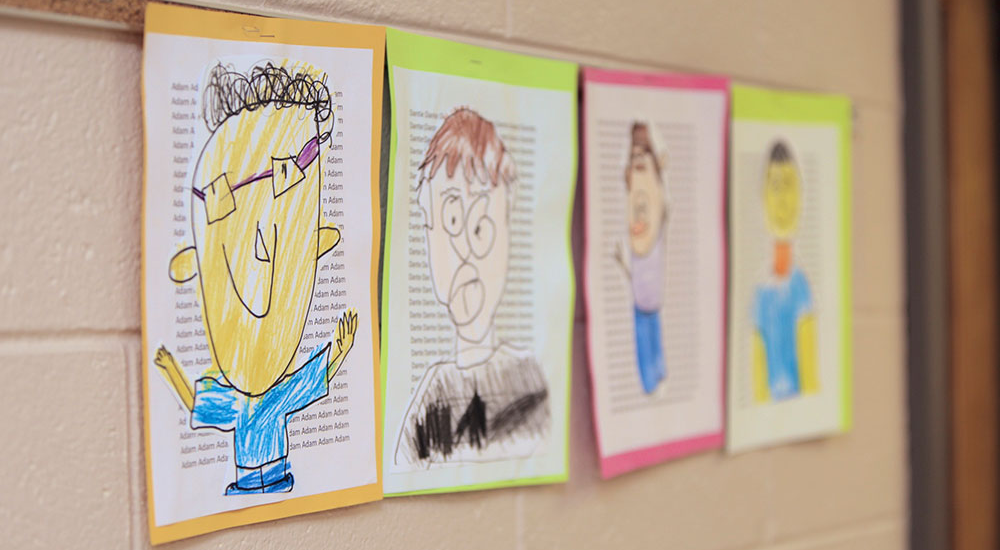Success Stories

Success Story 1 – Tremendous Growth
History
Robert began his 8-year tenure at Durand when he was 5 years old. When Robert arrived at Durand, he was still wearing diapers, and showed no interest in toileting. His verbal communication skills were limited and his social interaction was greatly impaired. Often students with developmental deficits benefit from placement in the Durand program. They make strides that could never be made without the caring professional intervention of the Durand staff. Robert was well above average in size. He was a young boy growing quickly into a man’s body. This made tangible rewards extremely successful.
Family Life
As the only child of a caring single parent, Robert’s family was a great supporter of the skills being worked on in school. Mom was in constant communication with the staff, which helped with the consistency when learning new concepts. Our social work staff consisting of trained therapists works closely with parents creating an inclusive treatment team.
The Plan
He benefited from related services including speech and social skills training. Robert was placed in a class with students who exhibited similar challenges. The staff in this class is highly trained and specializes in teaching students with Developmental disabilities
The Results
By the time Robert graduated from Durand at the age of 13, he had grown into a fine young man. He had become independent in many of his life skills, and had a solid foundation in Reading and Math. Robert was not only a verbal student but had learned how to “talk back” and “speak up” for himself. His social skills improved to the level of playing card games with his peers. This little 5 year old blossomed into a 6 foot 2 inch social butterfly who will make a mark wherever he goes. He presently attends a program that will service him until the age of 21.

Success Story 2 – Parental Partnerships at Durand
History
Brian came to Durand during the 1980’s presenting with many behavioral problems, social difficulties with peers, and a lack of motivation in academics.
Family Life
Durand encourages parental input, and Brian’s mother and father were helpful partners in shaping Brian’s behavior. Daily behavior and homework sheets were sent home and reviewed by Brian’s parents. Questions and concerns were immediately discussed, and communication between home and school was a daily event. Brian’s counselor also worked closely with Brian and his family to establish the close ties between home and school.
The Plan
Brian was here for several years, and then finally reached Room 304. Room 304 is Durand’s “high school prep” program. It is here where students are taught to be responsible adolescents, where the academic expectations are higher, and where students are encouraged to find the subjects that interest them. Durand prepares these students for in-district middle- or high-school programs, vocational school, or an alternative high school.
Progress
Although there were many personality traits that isolated Brian from others, a rapport was established between him and the teaching staff. The teachers saw the potential in Brian and felt that various behavioral interventions and staff support would help him to become a successful student. Brian flourished that year. Since Durand’s classrooms are relatively small and their student/teacher ratios are low, Brian received individualized attention throughout the day. Motivating lessons were a daily part of his routine, and Brian slowly came around to enjoy and question the concepts he was learning. A classroom behavior plan with incentives and rewards built in throughout the course of a given month helped Brian to monitor his own behavior and progress. Socialization skills were encouraged through unstructured free time, verbal training, a group counseling sessions are done in the classroom, and social skills training with counselors out of the classroom. Individual counseling sessions were provided, and Brian was encouraged to see his counselor whenever he felt he needed to talk or “vent”. Brian began to develop friendships and learned the coping skills needed to tolerate frustrating situations. He learned to accept differences in his classmates, and was soon an active member in group card games, etc.
Results
While we all knew Brian was a bright student, not anyone guessed he would become a scholar! He has graduated from Norfolk University and has now a master’s program in chemistry. Brian’s mother still comes into Durand from time-to-time to reminisce about the “old days”, and is certainly a proud mother! She, too, feels that it was a group effort that gave Brian the foundational skills that makes him the successful person he is today. Brian recently entered a doctoral program and completed a summer internship at the National Nuclear Laboratory at Los Alamos, New Mexico. It is difficult to imagine where Brian would be today without Durand’s interventions and the partnership with his mother.

Success Story 3 – Adolescent Changes
History
Paula is a young girl of 14 who is bright and compassionate. Last year she was fighting with her own inner demons that erupted in rage and defiance. This once beautiful caring baby sitter and tutor to younger students, she was fighting the changes that come about as an early adolescent. Her parents were frustrated, the staff was exhausted from daily physical confrontations and tragically Paula was failing academically. The staff began to question whether the program could handle and help Paula at that time. Our program prides itself on innovation and creative programming for all of its students. The first question the sending district asks if a receiving school requests another placement is: “What interventions have you tried.” Staff met and agreed we could do more. Together we wrote an intensive intervention plan.
The Plan
The plan was radical. We changed her class to a room where the students were less capable academically with the expectation that she would reconnect to the compassion and caring that characterized her pre adolescence namely the interest she had always shown in others. Secondly, we retained a consultant Applied Behavior Analyst with who had previously worked with the principal. He observed her and wrote a specific behavior plan. He worked with and trained the staff providing them with a weekly analysis of her progress based on the data they provided. Most importantly he told staff we had a plan and we had to stick to it and that progress would be slow at first and then accelerate as she progressed. As predicted progress was slow at first and there was one step forward and two steps back, but the weekly analysis showed her making progress. Within 2 months she had reduced her negative behavior by half, and her time on task and learning rate grew exponentially. It was as if a great burden had been lifted and she was back on track. Paula was given clear direction, a high level of expectations and support. Progress continued throughout the summer and she began thinking about the possibility of college. Perhaps even a degree in education. She would make a fine teacher.
Family Life
Unfortunately, her family does not have much money. Her parents are proud hardworking people who want their children to do better. They live in a poor neighborhood in the inner city Camden.
Results
During the last six months she has blossomed into a lovely young lady who helps others and has made excellent academic progress in our higher-level classes. Paula has the potential to go far in the estimation of our staff. The same staff members that were thinking about discharge less than a year ago. Paula is one of those rare children who have confronted the challenges of adolescence and is winning in spite of a difficult beginning. Small examples of her progress can be seen in her attention to her long blond hair, which she now wears up in a neat style. Her clothing and appearance reflect the inner self-confidence of one who feels some measure of impact on her environment. Her self-respect has grown as she develops insight into her issues.